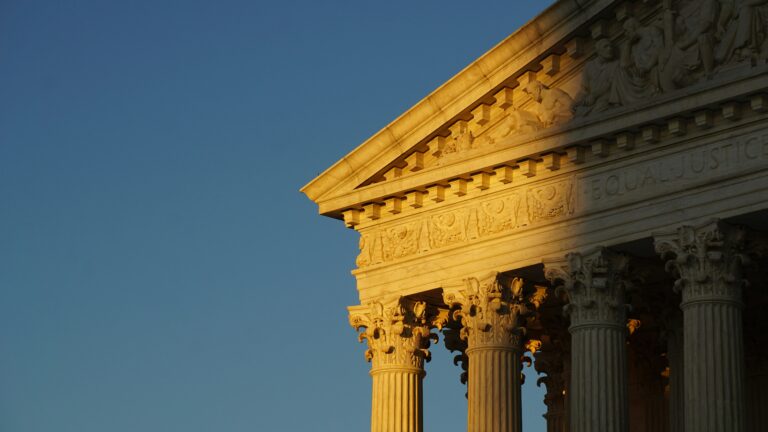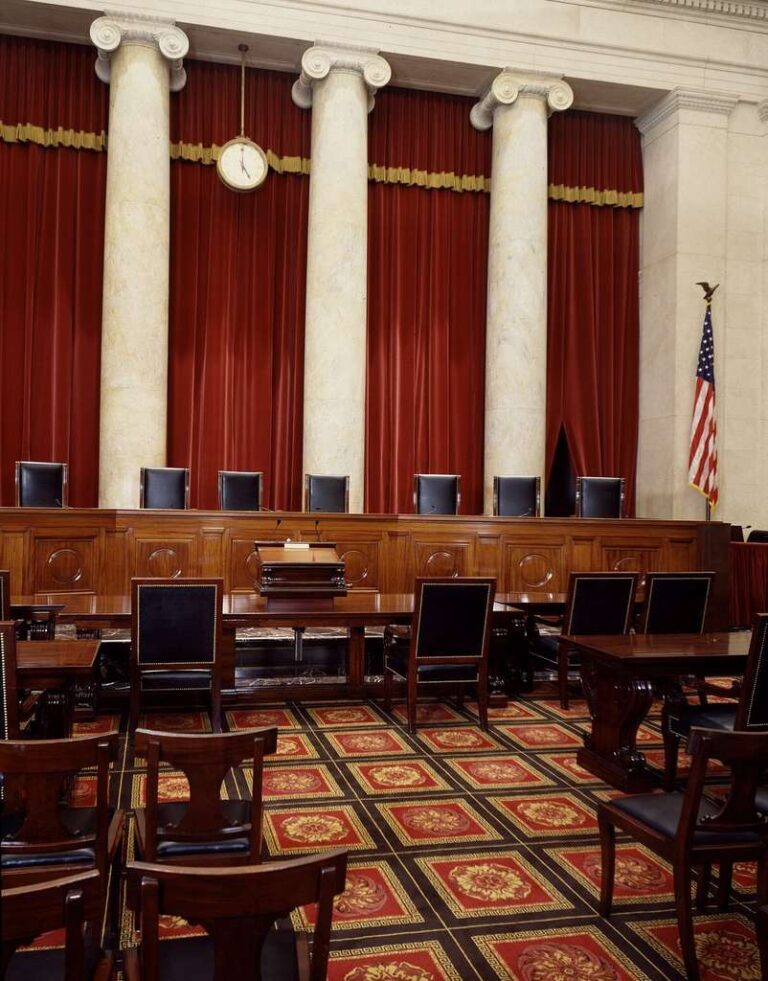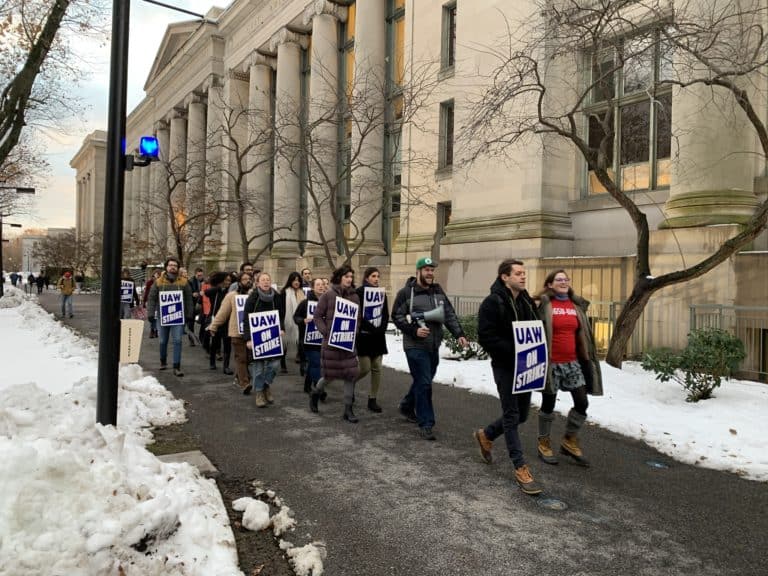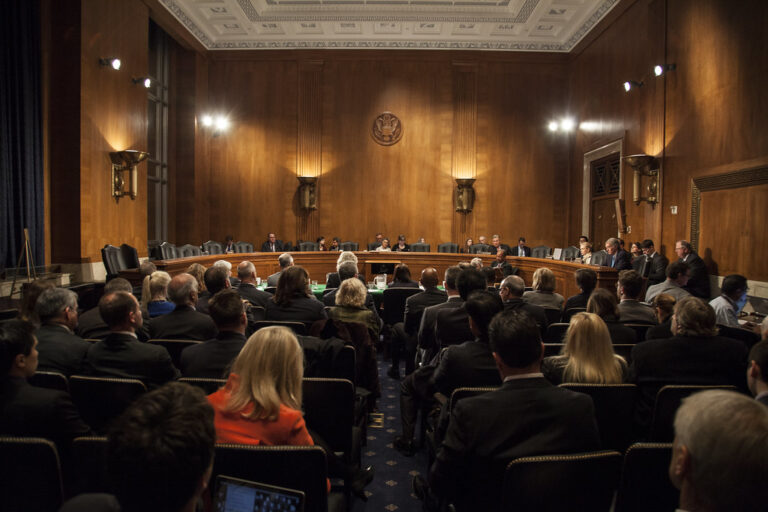
Sophia is a student at Harvard Law School and a member of the Labor and Employment Lab.
In 2024, the California Legislature enacted Senate Bill 399 — the “California Worker Freedom from Employer Intimidation Act” — which prohibits employers from retaliating against an employee for declining to attend an “employer-sponsored meeting” that “communicate[s] the employer’s opinion about religious or political matters.” But the day before SB 399 was set to go into effect, the California Chamber of Commerce, and a number of other employer interest groups, brought suit to block its enforcement. Nine months later, in California Chamber of Commerce v. Bonta, Judge Daniel J. Calabretta of the Eastern District of California granted the Plaintiffs’ requested preliminary injunction.
Because the bill defines “political matters” in part as “the decision to join or support any… labor organization,” the court held that the Plaintiffs were likely to prevail on the issue of NLRA preemption. Setting aside the preemption issue, Judge Calabretta concluded that the remainder of SB 399’s prohibitions on mandatory meetings with respect to religious and non-union political matters was a content-based regulation of speech that failed to withstand strict scrutiny. The court rejected the State’s defense that the law withstood strict scrutiny under the Supreme Court’s “captive audience doctrine.” In this post, I trace the origins of the Supreme Court’s captive audience doctrine and argue in favor of its application to captive audience meetings in the workplace.
The Captive Audience Doctrine
A core principle of First Amendment jurisprudence is that “more speech” is always better than “enforced silence.” As such, content-based regulations on speech trigger strict scrutiny and are almost universally struck down as unconstitutional. However, the Court has found some speech to be “so obtrusive as to make it impossible for an unwilling individual to avoid exposure to it” in a limited number of cases known as the captive audience doctrine.
The idea of the captive audience doctrine burgeoned even before the Court formally used the phrase. In Kovacs v. Cooper (1949), the Court upheld a city ordinance prohibiting the emittance of amplified sound on vehicles in public streets because, unlike a “passer-by who may be offered a pamphlet in the street but cannot be made to take it,” an “unwilling listener… [i]n his “home or on the street… is practically helpless to escape this interference with his privacy by loudspeakers….” Here, the Court acknowledged the state’s interest in protecting individuals who at times—due to certain time, place, and manner circumstances—are compelled to listen to certain speech against their will and have no reasonable means of avoiding it.
The Court’s first official mention of “captive audience” appeared in the dissent in Public Utilities Commission v. Pollak (1952), where Justice Douglas argued that streetcar passengers represent a captive audience because riding public transit is often “a matter of necessity” for those commuting to work, therefore “the man on the streetcar has no choice but to sit and listen.” Douglas viewed the playing of radio on public transit as a threat to individual privacy that once invaded, could never be restored. Though the music flowing from the radio on the streetcard appeared innocuous to the majority, Douglas was concerned that the government could use the radio as a medium to communicate political propaganda in the future.
It was not until Rowan v. Post Office Dept. (1970) that the Supreme Court explicitly mentioned “captive audiences” in a majority opinion. The Court upheld the constitutionality of a law granting residents the right to refuse “erotically arousing or sexually provocative” mail, holding that “a mailer’s right to communicate must stop at the mailbox of an unreceptive addressee” because every person has the right “to be let alone” at home. Further, an individual’s right to free speech is not unbounded because “no one has a right to press even ‘good’ ideas on an unwilling recipient.”
To some degree, upholding the constitutionality of speech restrictions in Rowan was at odds with most of the Court’s precedent that overwhelmingly viewed free speech as a marketplace of ideas where free exchange was critical. Aware of this tension, the Court clarified its narrow view of the captive audience doctrine in Cohen v. California (1971), holding that people in the Los Angeles courthouse where Cohen donned a jacket with the words, “Fuck the Draft,” were not a captive audience because they “could effectively avoid further bombardment of their sensibilities simply by averting their eyes.”
From these cases, a pattern emerges—when deciding whether a captive audience is at play, the Court considers two key questions: (1) Is the unwilling listener’s privacy unreasonably invaded? (2) Can the listener take reasonable measures to avoid such speech? A dispositive factor in answering these questions is identifying where the speech is heard or read. When a person is home, as in Kovacs and Rowan, her privacy interest is at its peak, so the Court is more likely to uphold a speech-restricting regulation in order to protect that interest. On the other hand, a person in public automatically gives up some level of privacy and autonomy just by interacting in daily society. Though a person walking on a public sidewalk might encounter unwanted speech, they can readily walk away. Whereas, a person at home is not expected to retreat anywhere else because the right to enjoy one’s home as the ultimate place of privacy and solitude is widely recognized.
Captive Audiences in the Workplace
With respect to SB 399, Judge Calabretta declined to extend the captive audience doctrine to captive audience meetings, writing that: “While the Court appreciates the practical difficulties of leaving a mandatory meeting organized by one’s employer, it is simply not the case that employees are “captive” in the same sense as one who is riding a bus.” This assertion might be correct in the literal physical sense that bus riders cannot freely exit a moving vehicle without risking bodily harm, but at-will employees in a mandatory meeting are subject to a more subtle—but no less coercive—form of captivity: economic dependence.
Though Judge Calabretta is correct that “no Court has expanded the captive audience line of cases to the employment context,” doing so would actually be perfectly consistent with the Court’s precedent, especially as seen in Lehman v. Shaker Heights (1974). The Court upheld a content-based municipal policy banning political advertisements in the public transit system because the City’s interest in avoiding “the blare of political proaganda… imposing upon a captive audience” was a “reasonable legislative objective[]” and the City had a duty to “provide rapid, convenient, pleasant, and inexpensive service to the commuters of Shaker Heights.” Justice Douglas, concurring, elaborated that “people who, because of necessity, become commuters, and, at the same time, captive viewers or listeners,” have “constitutional rights… to be free from forced intrusions on their privacy.” The critical underlying premise of the Court’s holding and Douglas’s concurrence is that passengers on public transit constitute captive audiences precisely because they are commuters — people who rely on public transit to get to and from work everyday. Further, the Court suggests that commuting, unlike a joyride, embodies a certain level of involuntariness or economic compulsion. If the Supreme Court has recognized protecting the rights of commuters to enjoy a politics-free ride to work as a compelling government interest, then shouldn’t these commuters enjoy the same rights at their final destination?










Daily News & Commentary
Start your day with our roundup of the latest labor developments. See all
November 24
Labor leaders criticize tariffs; White House cancels jobs report; and student organizers launch chaperone program for noncitizens.
November 23
Workers at the Southeastern Pennsylvania Transportation Authority vote to authorize a strike; Washington State legislators consider a bill empowering public employees to bargain over workplace AI implementation; and University of California workers engage in a two-day strike.
November 21
The “Big Three” record labels make a deal with an AI music streaming startup; 30 stores join the now week-old Starbucks Workers United strike; and the Mine Safety and Health Administration draws scrutiny over a recent worker death.
November 20
Law professors file brief in Slaughter; New York appeals court hears arguments about blog post firing; Senate committee delays consideration of NLRB nominee.
November 19
A federal judge blocks the Trump administration’s efforts to cancel the collective bargaining rights of workers at the U.S. Agency for Global Media; Representative Jared Golden secures 218 signatures for a bill that would repeal a Trump administration executive order stripping federal workers of their collective bargaining rights; and Dallas residents sue the City of Dallas in hopes of declaring hundreds of ordinances that ban bias against LGBTQ+ individuals void.
November 18
A federal judge pressed DOJ lawyers to define “illegal” DEI programs; Peco Foods prevails in ERISA challenge over 401(k) forfeitures; D.C. court restores collective bargaining rights for Voice of America workers; Rep. Jared Golden secures House vote on restoring federal workers' union rights.